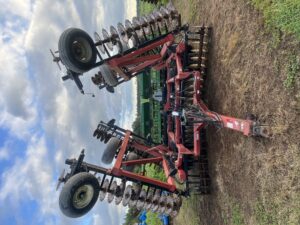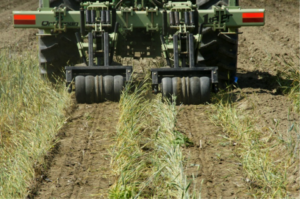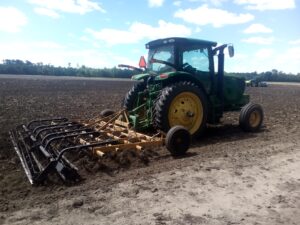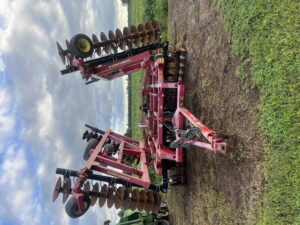Tillage Management
go.ncsu.edu/readext?940970
en Español / em Português
El inglés es el idioma de control de esta página. En la medida en que haya algún conflicto entre la traducción al inglés y la traducción, el inglés prevalece.
Al hacer clic en el enlace de traducción se activa un servicio de traducción gratuito para convertir la página al español. Al igual que con cualquier traducción por Internet, la conversión no es sensible al contexto y puede que no traduzca el texto en su significado original. NC State Extension no garantiza la exactitud del texto traducido. Por favor, tenga en cuenta que algunas aplicaciones y/o servicios pueden no funcionar como se espera cuando se traducen.
Português
Inglês é o idioma de controle desta página. Na medida que haja algum conflito entre o texto original em Inglês e a tradução, o Inglês prevalece.
Ao clicar no link de tradução, um serviço gratuito de tradução será ativado para converter a página para o Português. Como em qualquer tradução pela internet, a conversão não é sensivel ao contexto e pode não ocorrer a tradução para o significado orginal. O serviço de Extensão da Carolina do Norte (NC State Extension) não garante a exatidão do texto traduzido. Por favor, observe que algumas funções ou serviços podem não funcionar como esperado após a tradução.
English
English is the controlling language of this page. To the extent there is any conflict between the English text and the translation, English controls.
Clicking on the translation link activates a free translation service to convert the page to Spanish. As with any Internet translation, the conversion is not context-sensitive and may not translate the text to its original meaning. NC State Extension does not guarantee the accuracy of the translated text. Please note that some applications and/or services may not function as expected when translated.
Collapse ▲Tillage practices play a crucial role in modern agriculture, influencing soil health, water preservation, erosion control, and overall crop yields. Among these practices, No-Till management, also known as zero-till, stands out as a conservative farming approach that prioritizes the protection of soil structure by minimizing soil disturbance during crop cultivation. By following principles such as minimal soil disturbance, permanent soil cover, and maximizing crop diversification and rotation, No-Till management has become an essential component of sustainable farming. In this comprehensive guide, we will explore various tillage methods, including Minimum Tillage, Vertical Tillage, Strip Tillage, Chisel Plow, Disk Tillage, and the traditional Conventional Tillage with Moldboard Plow. Each method will be examined, highlighting its benefits, impact on soil productivity, and suitability for specific soil conditions and cropping requirements. From cutting-edge practices to time-tested techniques, this guide will equip farmers with the knowledge needed to make informed decisions that promote soil health, environmental sustainability, and ultimately, the future of agriculture.
No-till management, also known as zero-till, is a conservative farming practice that aims to protect soil structure by minimizing soil disturbance during crop cultivation. By adhering to the principles of minimal soil disturbance, permanent soil cover, and maximizing crop diversification and rotation, no-till management promotes soil health, water preservation, reduced erosion, increased biodiversity, and higher crop yields, making it essential for sustainable farming. Transitioning to no-till requires equipment adjustments, weed management, and modifications to nutrient management, but the long-term benefits make it a promising strategy for the future of agriculture.
Minimum tillage refers to cultivation practices that minimize soil disturbance and limit the number of passes over the field, without inverting the soil. It includes methods like strip tillage, ridge tillage, and mulch tillage, with a focus on mixing crop residues into the soil to create a favorable seedbed for the next crop. While it requires some adjustments and learning, transitioning from conventional tillage to minimum tillage can lead to significant economic, agronomic, and environmental advantages. Farmers can use minimum tillage as a stepping stone towards adopting no-till practices.
 Vertical tillage management is a minimal tillage practice focused on the vertical profile of the soil, helping with residue management and seedbed preparation. The equipment used ensures minimal horizontal soil movement and aims to prevent density changes between tilled and subsurface layers. Various primary and secondary tillage tools fall under vertical tillage, such as subsoilers, disc chisels, and chisel plows with vertical points, each offering different levels of soil disturbance and residue burial.
Vertical tillage management is a minimal tillage practice focused on the vertical profile of the soil, helping with residue management and seedbed preparation. The equipment used ensures minimal horizontal soil movement and aims to prevent density changes between tilled and subsurface layers. Various primary and secondary tillage tools fall under vertical tillage, such as subsoilers, disc chisels, and chisel plows with vertical points, each offering different levels of soil disturbance and residue burial.
 Strip tillage is a conservation tillage practice that combines the benefits of no-till management with the added advantage of alleviating compaction and root growth problems. By disturbing the soil in strips only along the rows where crops will be planted, strip tillage provides a gradual transition from intensive tillage to no-till. Farmers can customize the width and shape of shanks to suit their specific soil conditions and requirements.
Strip tillage is a conservation tillage practice that combines the benefits of no-till management with the added advantage of alleviating compaction and root growth problems. By disturbing the soil in strips only along the rows where crops will be planted, strip tillage provides a gradual transition from intensive tillage to no-till. Farmers can customize the width and shape of shanks to suit their specific soil conditions and requirements.
 The chisel plow is a multipurpose tillage tool used in primary tillage, soil improvement, and residue management in agriculture. It tills the soil without inverting it, leaving a rough surface and providing more residue coverage compared to moldboard plows. The system allows for various levels of residue cover by adjusting shank spacing, operating speed, chisel point selection, and tillage depth. Various chisel points are available, each offering different levels of soil mixing and residue retention.
The chisel plow is a multipurpose tillage tool used in primary tillage, soil improvement, and residue management in agriculture. It tills the soil without inverting it, leaving a rough surface and providing more residue coverage compared to moldboard plows. The system allows for various levels of residue cover by adjusting shank spacing, operating speed, chisel point selection, and tillage depth. Various chisel points are available, each offering different levels of soil mixing and residue retention.
 They consist of concave metal disks set at an oblique angle, with smooth or scalloped edges for different soil and residue conditions. Disk harrows can be single-action or double-action, providing varying levels of soil slicing and residue coverage. Disk tillage can be adjusted to meet the requirements of conventional or conservation tillage, offering benefits for soil erosion control and soil quality maintenance.
They consist of concave metal disks set at an oblique angle, with smooth or scalloped edges for different soil and residue conditions. Disk harrows can be single-action or double-action, providing varying levels of soil slicing and residue coverage. Disk tillage can be adjusted to meet the requirements of conventional or conservation tillage, offering benefits for soil erosion control and soil quality maintenance.
Conventional tillage management involves using a moldboard plow for primary tillage, which slices, lifts, and inverts the soil, causing horizontal shearing and complete soil inversion. While moldboard plowing can provide short-term benefits like improved seedbed and residue burial, it has long-term detrimental effects on soil productivity. Moldboard plowing also requires high energy input and subsequent secondary tillage passes.


